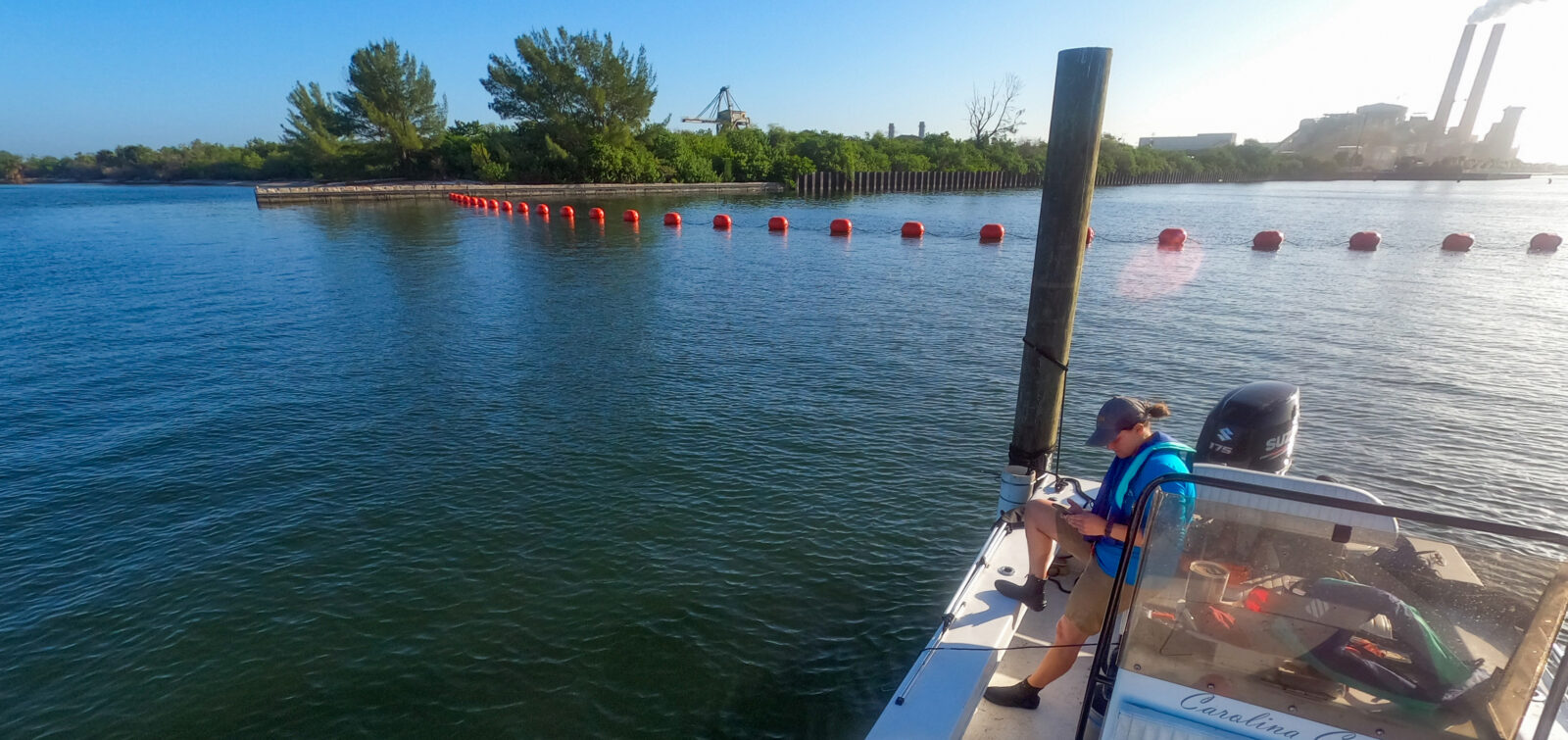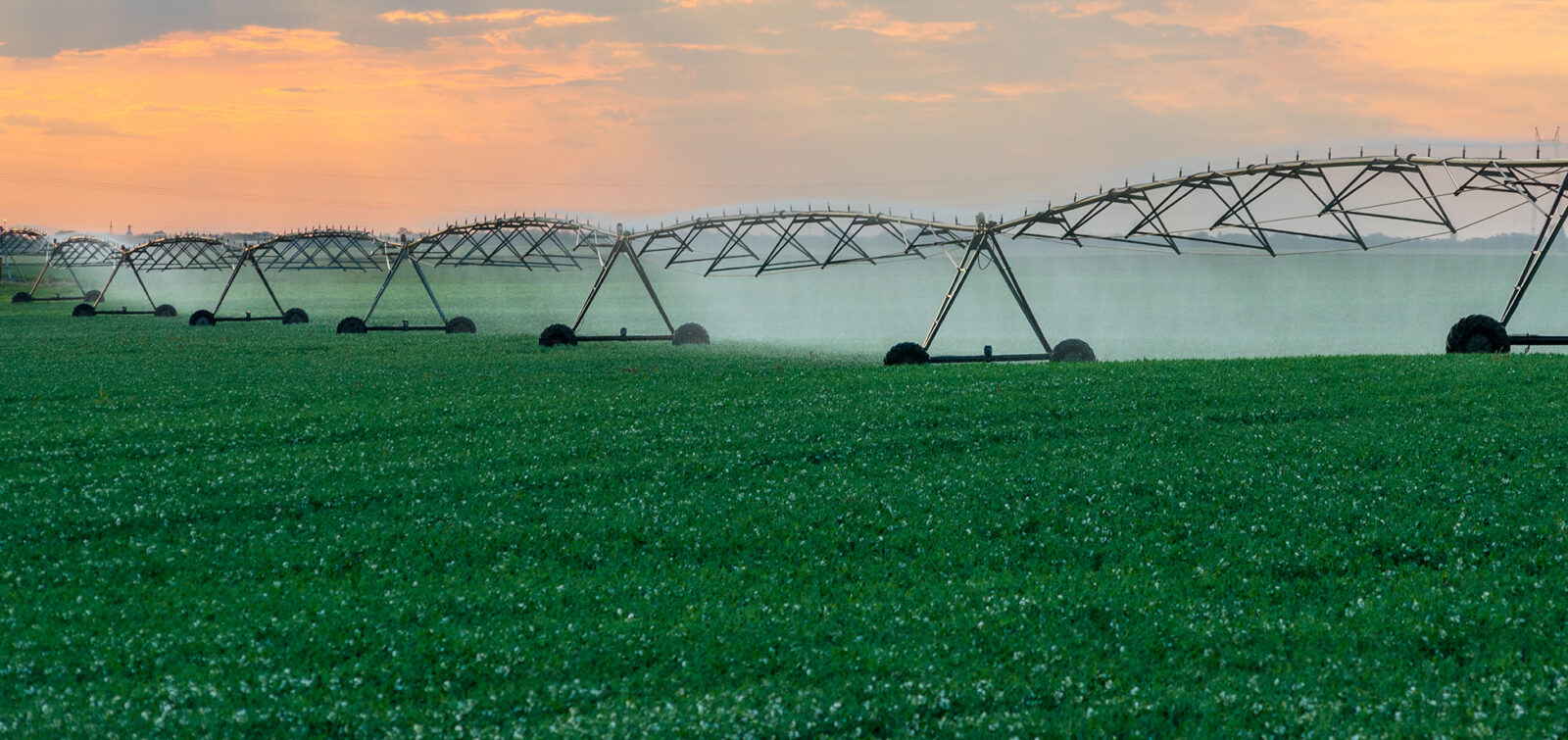Last month we talked about the importance of sustainable water management and different frameworks that can be used to address the effectiveness of stakeholders’ actions toward this goal. One such framework, the Sustainable Water Management (SWM) Profile, has emerged following several years of work by the Water Foundation. ESA Vice President Betty Andrews, PE, is a member of the SWM Team, a collaborative effort to develop and pilot test the framework, and today she provides further insight into this forward-thinking tool.
Since the Water Foundation initiated development of the SWM Profile tool in late 2012, I have had the pleasure of working with a diverse team of experts in the sustainable water management space to test, refine, and ultimately present an assessment tool to advance water supply sustainability. You can download our white paper on the SWM Profile here. This article describes the assessment framework used.
Ultimately, two of the greatest lessons I’ve learned from this endeavor is that every agency’s context is different, and an agency’s water supply can be dramatically affected by conditions across a much larger geography than their service area, including events in very distant locations. As a result, collaboration and sharing of information and resources regionally will be critical for moving sustainable water supply management forward in California, as envisioned in Governor Newsom’s water resilience portfolio.
Why the SWM Profile?
The challenges to achieving sustainable water supply management faced today by California water supply agencies can seem daunting: growing populations, aging infrastructure, degraded ecosystems, fragmented management systems, and uncertainty caused by climate change. Yet, we don’t have a standardized yardstick or assessment tool to identify stressors and vulnerabilities, articulate a pathway toward sustainability at the regional and local scales, and track progress and successes.
The SWM Profile was designed with some unique attributes, some of which we touched on in our last article, in that it:
- Evaluates both water supply vulnerabilities (“stressors”) and agency actions (“management responses”), but only uses agency actions to assign a rating.
- Addresses the actions taken at multiple scales: the agency itself, areas affected by agency collaboration activities, and the larger region that affects the agency.
- Produces results accessible to different audiences, including agency board members, financial institutions, water professionals, and the public.
- Is a voluntary evaluation framework not associated with any regulatory mandate.
- Is designed to be completed by an outside team with data support from the water agency’s staff, or to be completed by the water agency and verified by an outside team.
The SWM Profile was an experiment to see if a tool could be crafted that would address the need to assess sustainable water management, while providing an incentive to water supply agencies to strive for greater sustainability. While we were arguably successful at achieving the first goal, we found that the broad implementation required to achieve the second goal remained out of reach.
Data availability limitations posed the main hurdle to the SWM Profile being cost-efficient enough to get broad adoption at this time. Still, we learned quite a bit about the stressors to sustainable water management and how the effectiveness of an agency’s response might be measured and demonstrated to stakeholders and investors.
Assessment Framework
The SWM Profile’s standards assess the water agency’s water supply vulnerability to key stressors (risks or threats) and evaluates management responses to those stressors.
Part I – Stress Level Metrics
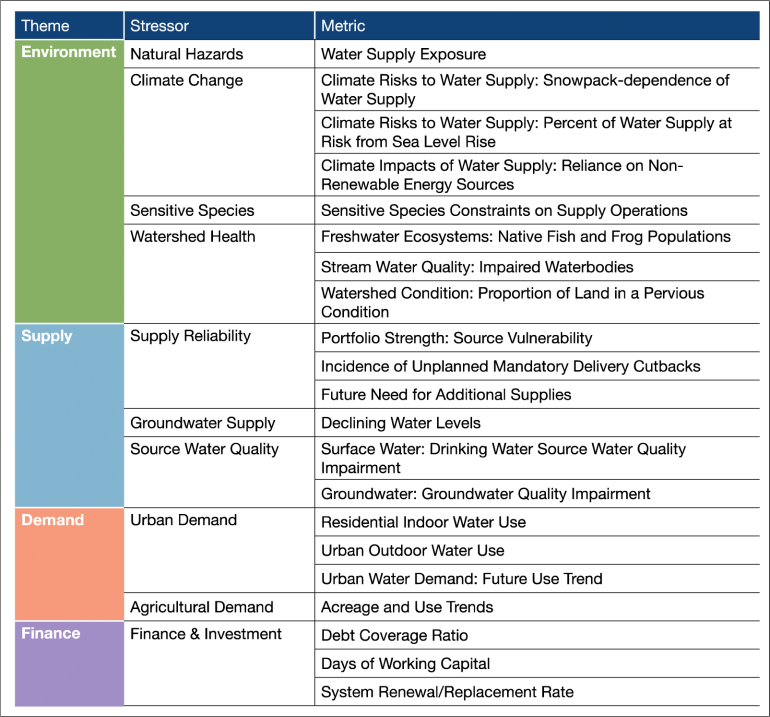
Stress level metrics can be high, moderate, or low, and it’s important to note that each stressor has a scope of analysis (e.g., local region of interest) indicating what geographic parts of the region and entities or features are to be evaluated. Another significant tenet of the SWM Profile is that, although stress levels affecting a water supply agency are evaluated, they do not affect how the tool rates the agencies. Rather, each participating agency is judged on how it responds to the stress.
Part II – Management Responses
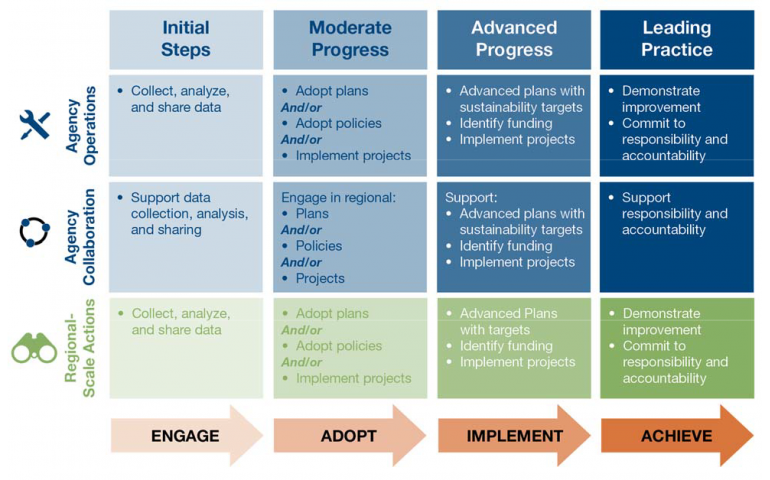
The SWM Profile’s scoring emphasis on management responses to stressors avoids penalizing agencies that are located in areas of high vulnerability, and it creates ratings results that can be improved relatively quickly through intentional action. A continuum of management responses is established, along which water agencies can progress from initial recognition of an issue to development of plans, to undertaking of actions and achievement of responses that advance water supply management toward sustainability.
Pilot Tests
Two agencies—first the Sonoma County Water Agency (Sonoma Water), and later the Inland Empire Utilities Agency (IEUA)—signed on to pilot test two different versions of the SWM Profile as the Water Foundation and SWM Team worked through its development.
You can see the IEUA’s scoring table and rating here as an example of the results (summary; full report).
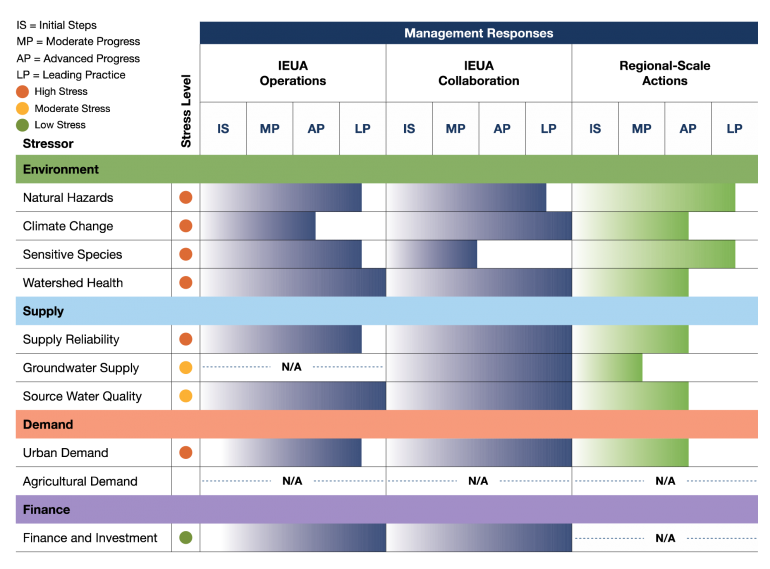
Future of the SWM Profile
We’re proud to see that the SWM Profile approach has gained recognition and acceptance and is being applied and adapted in several ways. Derivative efforts include a sustainability assessment in the 2018 update of the One Water One Watershed Plan by the Santa Ana Watershed Project Authority, which was funded by the California Department of Water Resources as part of the California Water Plan Update 2018. In other examples, the Pacific Institute is using its concepts to develop a simpler assessment tool for retail water agencies, as well as developing a guidebook for elected leaders on water agency boards and municipalities to foster sustainability in their water supply operations.
If you are a water supply agency or stakeholder interested in learning more about how our work on the SWM Profile might help to inform your efforts to improve the sustainability of your water management, please contact Betty Andrews.

